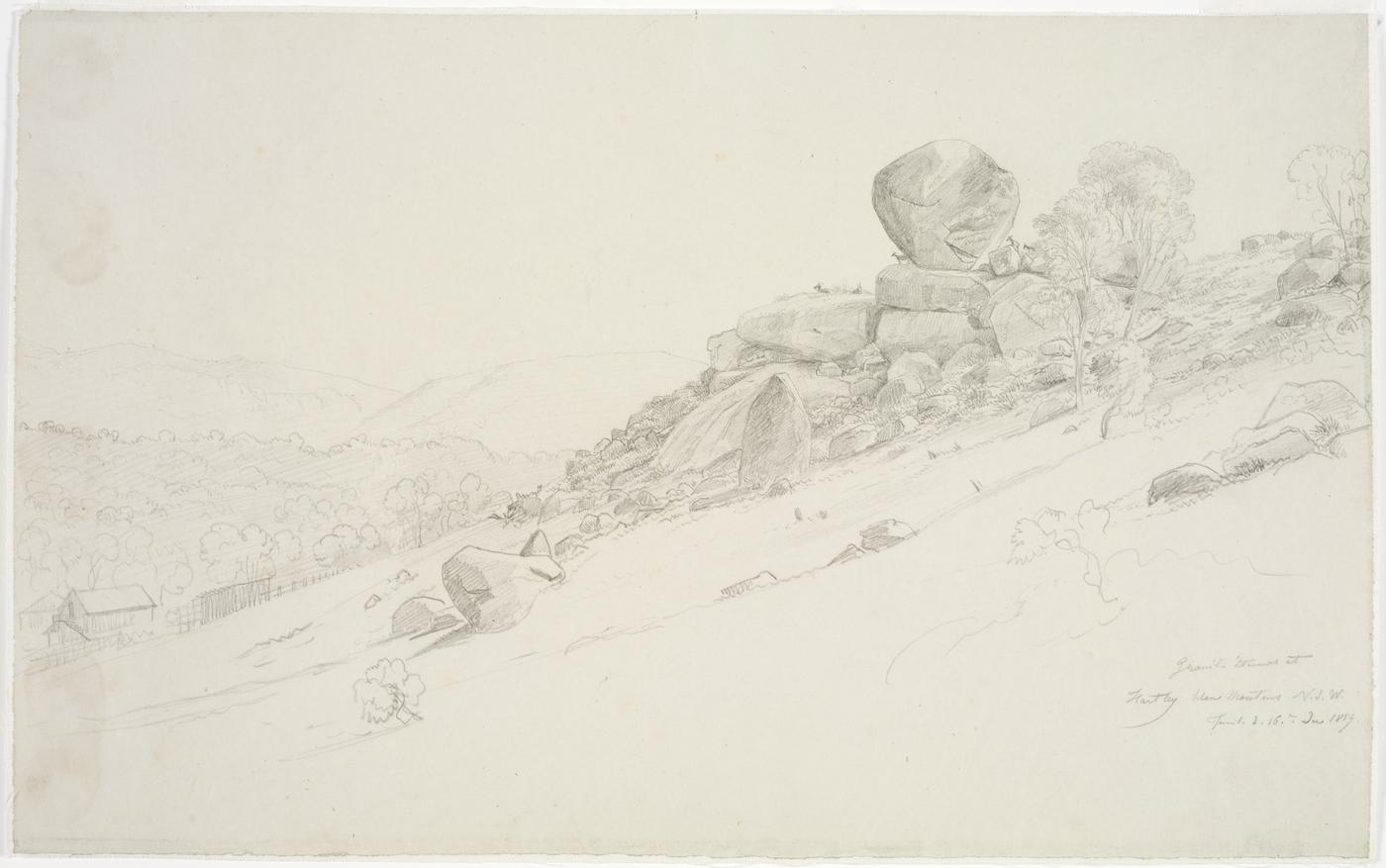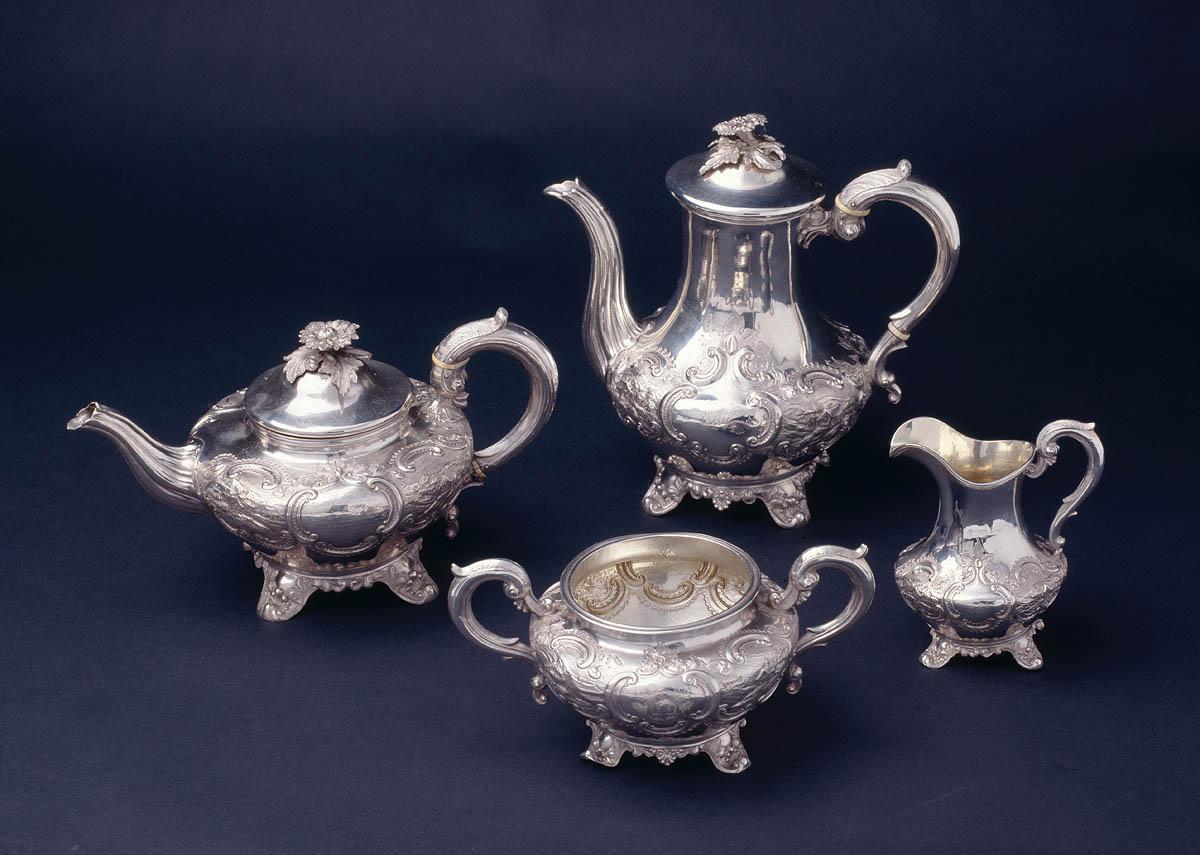Rumours of gold
The first gold discoverers were shepherds, surveyors and clergymen. As early as 1823, surveyor James McBrien noticed gold particles by the Fish River east of Bathurst.
Shepherds searching for grazing lands travelled westwards over the Blue Mountains and moved onto land which revealed gold-bearing quartz reefs.
An ex-convict and shepherd named McGregor found many pieces of gold in the Wellington region and chipped parts off to take to Sydney where it was displayed in jewellery shop windows.
However it wasn’t until the 1840s that gold exploration was seriously discussed by geologists such as the Reverend William Branwhite Clarke. Anglican clergyman and geologist, Rev. Clarke was principal at the King’s School, Parramatta and later the rector at St Thomas’, North Sydney. His passion was geology and in 1841, while exploring the Blue Mountains for fossils, he examined granite slabs near Hartley and discovered particles of gold.
Clarke wrote that the country would be found 'abundantly rich in gold'. He continued to collect specimens and in April 1844 he informed Governor Gipps of his finds and later claimed that the governor directed him to 'Put it away, Mr. Clarke, or we shall all have our throats cut'.
The ruling elite feared that a predominantly convict population striking it rich would lead to greater crimes or result in a convict rebellion brought on by greed for gold.
A gold rush in the bush, away from the main population centre could upset the status quo of the ordered convict society.
Edward Hammond Hargraves
Edward Hammond Hargraves was a shrewd gold promoter, credited with discovering the first payable goldfields near Bathurst, New South Wales.
Returning unsuccessfully from the Californian goldfields, Hargraves decided to travel west to Wellington in search of Australian gold during the summer of 1851. Visiting an inn at Guyong owned by the Lister family, he changed his travel plans and relied upon local knowledge of the area.
With the son of the innkeeper, John Lister and the Tom brothers, William and James, he started panning for gold at Lewis Ponds Creek. Hargraves taught the young men how to make a Californian cradle which he had seen on the Californian goldfields. This wooden contraption could be rocked from side to side so that the heavy gold particles were retained when the lighter gravel was sifted through.
On February 12, 1851 Hargraves, along with his assistants, discovered flecks of gold in the Lewis Ponds Creek.
Hargraves wrote to William Northwood, a Sydney business man, announcing his gold discovery. His letters are cross-hatched, a common method of conserving paper at the time.
John Lister and the Tom Brothers
Edward Hargraves travelled to Sydney to negotiate with the Colonial Secretary regarding his reward for finding gold. His assistants, John Lister and William and James Tom continued working their cradle and located four ounces of gold further downstream from Hargraves’ first find, including a two-ounce nugget that William Tom noticed in a rock crevice. Hargraves purchased these nuggets and sent some by mail to the Colonial Secretary. Announcing that it was he who had discovered payable gold in the district, Hargraves began a publicity campaign, generating much discussion in the region and naming the part of the creek which yielded gold the FitzRoy Bar after the Governor and the area Ophir, after the biblical city of gold.
Hargraves was feted as a hero and was rewarded by the government with £10,000 and an annual pension of £250 and was given the position of Commissioner of Crown Lands for the gold districts. He received many valuable gifts and was the subject of many triumphant portraits.
It was a number of decades before John Lister and the Tom brothers received formal recognition of their part in the discovery of gold, finally being acknowledged by a select committee of the New South Wales Legislative Assembly in 1890.
William Tom wrote an account of meeting Hargraves and the work these men undertook in prospecting for gold as part of their evidence to the NSW Legislative Assembly.
This story has been developed with the support of the State Library of NSW Foundation.
We would like to acknowledge the generosity of St Barbara Ltd.


